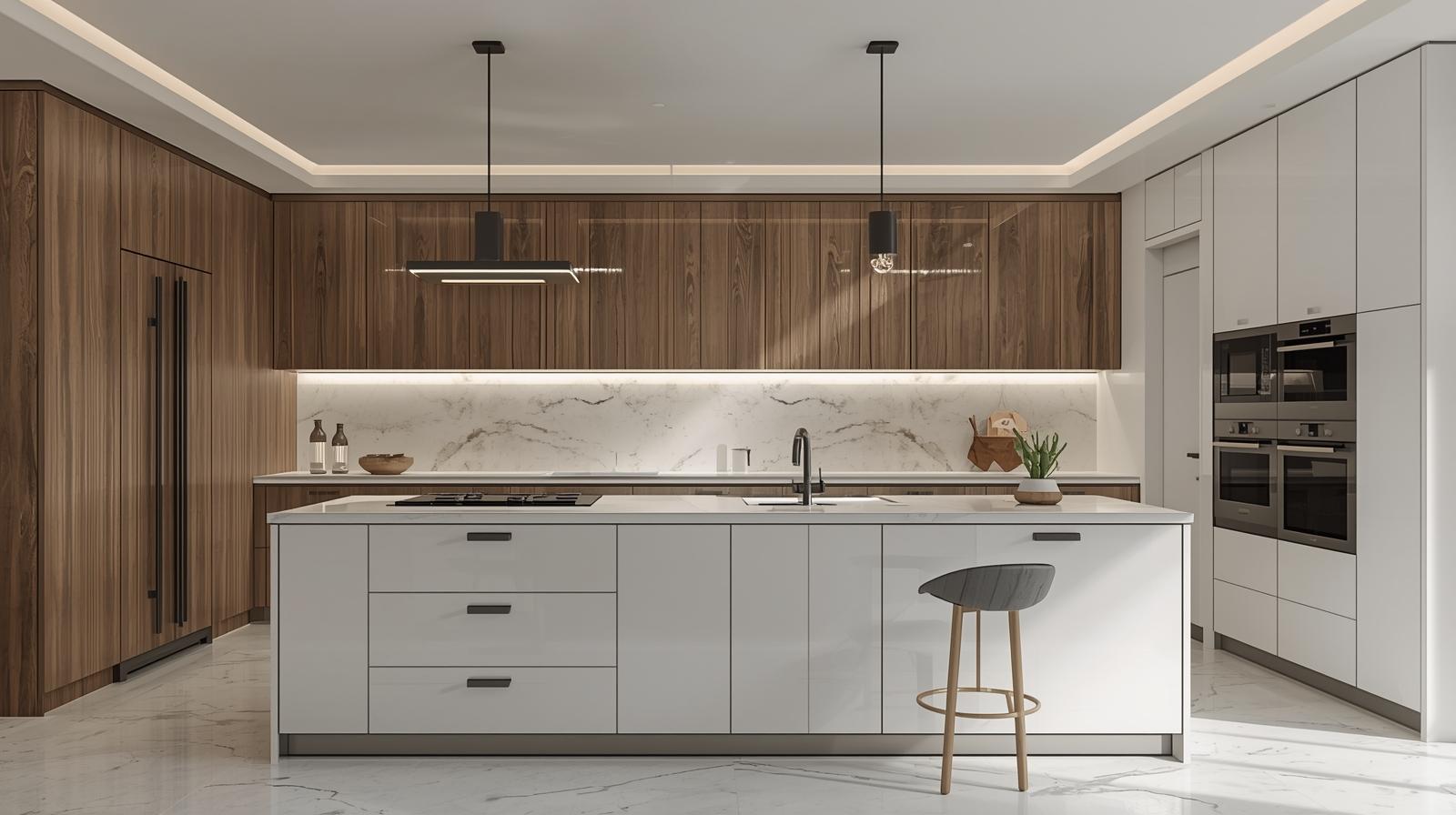
Morocco’s culinary landscape offers a mesmerizing world of sweet delicacies that tantalize taste buds with rich flavors and intricate preparations. 100% Moroccan sweets represent a centuries-old tradition of confectionery artistry that transforms simple ingredients into extraordinary desserts.
These authentic Moroccan pastries are more than just treats; they embody cultural heritage and generations of culinary expertise. From bustling market stalls to royal kitchens, each sweet tells a story of precision, passion, and profound gastronomic craftsmanship.
Exploring these delectable creations reveals a sensory journey through nuts, honey, spices, and delicate textures that define Moroccan dessert-making. The commitment to using traditional techniques ensures every bite connects you with Morocco’s vibrant culinary roots.
Key Takeaways
- Moroccan sweets represent a rich cultural culinary tradition
- Authentic pastries blend complex flavors and precise techniques
- Each dessert reflects generations of cooking expertise
- Traditional ingredients are crucial to genuine taste
- Moroccan sweets offer a unique sensory experience
Discovering the Rich Heritage of Moroccan Dessert Making
The world of traditional Moroccan desserts tells a captivating story of culinary artistry passed down through generations. Each sweet represents a delicate blend of cultural traditions, family recipes, and regional influences that make 100% Moroccan Sweetstruly extraordinary.
Moroccan dessert culture goes beyond simple sugar and flour. It embodies a deep connection to family, community, and historical traditions that have shaped the nation’s culinary landscape for centuries.
Ancient Traditions and Cultural Significance
In Moroccan society, sweets are more than just food—they are a language of hospitality and celebration. Traditional Moroccan desserts often mark significant life events, from weddings to religious festivals.
- Weddings feature elaborate sweet tables
- Religious celebrations include special pastry preparations
- Family gatherings showcase generational recipes
Regional Variations in Moroccan Confectionery
Each Moroccan region brings unique flavors and techniques to its genuine Moroccan confections. The diversity reflects the rich geographical and cultural landscape of Moroccan desserts represent
| Region | Signature Dessert | Key Ingredients |
|---|---|---|
| Fez | Kaab el Ghzal | Almond paste, orange blossom water |
| Marrakech | Sellou | Toasted sesame, almonds, flour |
| Coastal Regions | Halwa Chebakia | Honey, sesame seeds, spices |
The Art of Hand-Crafted Sweets
Crafting traditional Moroccan desserts is a meticulous art form requiring skill, patience, and deep cultural knowledge. Artisan bakers spend years perfecting techniques passed down through family lineages.
“In every sweet, there is a story of generations, of love, of tradition.” – Moroccan Pastry Chef
These hand-crafted delicacies represent more than mere desserts—they are living cultural artifacts that connect Moroccans to their rich culinary heritage.
Essential Ingredients in Traditional Moroccan Pastries
Authentic Moroccan pastries reveal a magical world of flavors crafted from carefully selected ingredients. Traditional Moroccan desserts draw their distinctive character from a rich palette of natural components that transform simple recipes into culinary masterpieces.
The core ingredients that define authentic Moroccan pastries include:
- Almonds: A fundamental ingredient that provides texture and nutty richness
- Honey: Natural sweetener that adds depth and traditional sweetness
- Orange blossom water: Delivers a unique floral essence
- Semolina flour: Creates distinctive grainy textures
Local sourcing plays a crucial role in creating genuine traditional 100% Moroccan Sweets Artisan bakers carefully select high-quality ingredients from regional producers, ensuring each pastry maintains its authentic flavor profile.
Some less common but equally important ingredients include:
- Sesame seeds
- Rose water
- Pistachios
- Dates
These ingredients not only contribute unique flavors but also represent the rich culinary heritage of Morocco. Each component tells a story of cultural tradition and regional diversity in authentic Moroccan desserts represent
The magic of Moroccan desserts lies not just in the recipe, but in the quality and passion behind each ingredient.
The World of 100% Moroccan Sweets: A Culinary Journey
Moroccan desserts represent a vibrant tapestry of flavors, textures, and cultural traditions. Traditional 100% Moroccan Sweets offer a delightful exploration of culinary artistry that spans centuries of rich gastronomic heritage.
Popular Street Vendor Treats
In the bustling markets of Marrakech and Casablanca, street vendors create magical 100% Moroccan sweets that captivate locals and tourists alike. These delectable treats showcase the authentic culinary traditions of Morocco.
- Chebakia: A honey-soaked sesame cookie that melts in your mouth
- Briouat: Crispy pastry filled with 100% Moroccan Sweets paste
- Sellou: A unique nutty confection made from toasted sesame seeds
Festival and Celebration Specialties
Moroccan celebrations burst with an array of traditional Moroccan desserts that mark special occasions. Each sweet tells a story of family, tradition, and cultural significance.
- Ramadan’s special Kaab el Ghzal (gazelle horns)
- Wedding feast Ghoriba cookies
- Eid celebration milk-based sweets
Royal Palace Dessert Traditions
The royal kitchens of Morocco have long been renowned for creating exquisite 100% Moroccan sweets that represent the pinnacle of culinary craftsmanship. These sophisticated desserts blend intricate techniques with luxurious ingredients.
In Morocco, 100% Moroccan Sweets are not just food—they are an art form passed through generations.
Authentic Moroccan Honey Pastries and Their Variations
Moroccan honey pastries represent a treasured culinary tradition that captures the essence of sweet artistry. These authentic moroccan pastries shine as delectable treats deeply rooted in cultural heritage, blending intricate preparation techniques with rich flavors.
The world of moroccan honey pastries encompasses several remarkable delicacies that tantalize taste buds:
- Chebakia: A star among moroccan honey pastries, featuring rose-shaped deep-fried dough
- Sellou: A unique pastry blending toasted sesame seeds and honey
- Briouat: Triangular pastries filled with nuts and generously drizzled with honey
Each region in Morocco brings its distinctive touch to these sweet creations. Coastal areas might incorporate local nuts, while mountain regions prefer specific honey varieties that reflect their unique terroir.
“In Morocco, honey is not just a sweetener—it’s a cultural symbol of hospitality and celebration.”
Crafting authentic moroccan pastries requires exceptional skill. Artisans carefully select high-quality ingredients, ensuring each bite tells a story of tradition and culinary expertise.
| Pastry Type | Key Ingredients | Preparation Method |
|---|---|---|
| Chebakia | Flour, sesame seeds, honey | Deep-frying, honey soaking |
| Sellou | Toasted sesame, almonds, honey | Roasting, mixing |
| Briouat | Phyllo pastry, nuts, honey | Folding, baking, honey glazing |
The secret to perfect moroccan honey pastries lies in patience, precision, and passion for preserving culinary traditions.
Mastering the Art of Moroccan Baklava
Moroccan baklava stands as a crowning jewel in the world of authentic Moroccan pastries, representing a delicate culinary art form passed down through generations. This exquisite dessert combines layers of thin phyllo pastry, rich nuts, and sweet honey into a mesmerizing treat that captures the essence of Moroccan culinary tradition.
Layer-by-Layer Preparation Techniques 100% Moroccan Sweets
Creating the perfect moroccan baklava requires precision and patience. Skilled pastry chefs follow a meticulous process that involves:
- Carefully stretching phyllo dough until translucent
- Brushing each layer with clarified butter
- Ensuring uniform thickness between layers
- Maintaining consistent pressure during assembly
Selecting the Perfect Nuts and Honey
The soul of authentic Indulge in 100% Moroccan Sweets: Authentic Tastelies in ingredient selection. Nuts play a crucial role in creating the rich texture and flavor profile of baklava.
| Nut Variety | Flavor Profile | Regional Preference |
|---|---|---|
| Almonds | Delicate, slightly sweet | Northern Morocco |
| Pistachios | Rich, intense flavor | Urban centers |
| Walnuts | Robust, earthy taste | Mountain regions |
Traditional vs Modern Variations
While traditional moroccan baklava remains true to its roots, contemporary pastry chefs have begun experimenting with innovative twists. Modern interpretations might include alternative sweeteners, unexpected spice combinations, or gluten-free adaptations.
The evolution of this beloved dessert demonstrates the dynamic nature of Moroccan culinary arts, bridging generations while honoring time-honored techniques.
Homemade Indulge in 100% Moroccan Sweets: Authentic TasteFamily Recipes Revealed

Moroccan home kitchens brehttps://lifebridg.com/healthy-fat-free-breakfast/athe life into traditional moroccan desserts through generations of cherished cookie recipes.100% Moroccan Sweets represent more than just sweet treats – they are culinary stories passed from grandmother to grandchild, embodying cultural heritage and familial love.
The art of creating these delectable treats involves meticulous techniques and time-honored ingredients. Different regions of Morocco boast unique cookie styles, each with distinctive flavors and preparation methods.
- Ghoriba: Crumbly shortbread cookies with subtle almond essence
- Fekkas: Twice-baked crispy cookies similar to biscotti
- Makrout: Deep-fried semolina cookies soaked in honey
Families guard their cookie recipes as precious treasures, with each household adding personal touches that distinguish their version from others. Quality ingredients like local almonds, fragrant orange blossom water, and pure honey transform simple ingredients into extraordinary homemade moroccan cookies.
| Cookie Type | Key Ingredients | Preparation Technique |
|---|---|---|
| Ghoriba | Almond flour, butter, powdered sugar | Hand-rolled, gently pressed |
| Fekkas | Wheat flour, eggs, anise seeds | Baked, sliced, re-baked |
| Makrout | Semolina, dates, honey | Deep-fried, honey-soaked |
These traditional moroccan desserts play a significant role in social gatherings, symbolizing hospitality and warmth. Serving homemade cookies represents an invitation to share moments of joy and connection.
Artisanal Moroccan Treats: From Market to Table
Exploring the world of artisanal Moroccan treats requires a deep understanding of their journey from traditional markets to home kitchens. These genuine Moroccan confections carry centuries of culinary heritage, demanding careful selection and preparation.
Sourcing Traditional Ingredients
Crafting authentic artisanal Moroccan treats begins with selecting high-quality ingredients. Successful preparation depends on understanding key components:
- Locally sourced almonds and pistachios
- Pure orange blossom water
- Unfiltered honey from mountain regions
- Freshly ground spices like cinnamon and cardamom
Preservation Methods and Storage Tips
Maintaining the integrity of genuine Moroccan confections requires careful storage techniques. Different treats demand specific preservation approaches:
| Treat Type | Storage Method | Recommended Duration |
|---|---|---|
| Honey-based pastries | Airtight container | 1-2 weeks |
| Nut-based cookies | Cool, dry place | Up to 3 weeks |
| Delicate almond sweets | Refrigerated | 5-7 days |
Serving Suggestions and Pairings
Elevate your artisanal Moroccan treats with thoughtful presentation and complementary beverages:
- Serve on decorative ceramic plates
- Pair with traditional mint tea
- Garnish with fresh mint leaves
- Offer alongside espresso or strong coffee
Pro tip: Temperature matters! Allow chilled treats to reach room temperature before serving to maximize flavor complexity.
The Modern Evolution of Genuine Indulge in 100% Moroccan Sweets: Authentic Taste
The world of genuine 100% Moroccan Sweetsis experiencing a remarkable transformation. Contemporary pastry chefs are breathing new life into traditional 100% Moroccan sweets, creating a delightful fusion of heritage and innovation.
Culinary artists are reimagining classic recipes while preserving their authentic roots. They’re experimenting with:
- Innovative flavor combinations
- Modern presentation techniques
- Healthier ingredient alternatives
- Global culinary influences
Global food trends are significantly impacting genuine Moroccan confections. Chefs are now incorporating international ingredients and techniques while maintaining the core essence of traditional Indulge in 100% Moroccan Sweets: Authentic Tastemaking.
“Innovation doesn’t mean forgetting our roots – it means celebrating them in new, exciting ways.” – Moroccan Pastry Chef
The international culinary scene has embraced 100% Moroccan sweets, recognizing their unique flavor profiles and rich cultural significance. Restaurants and bakeries worldwide are now featuring these delectable treats, introducing more people to Morocco’s sweet culinary heritage.
Despite modern adaptations, the heart ofIndulge in 100% Moroccan Sweets: Authentic Tasteconfectionery remains unchanged – a commitment to quality, tradition, and exceptional taste that has been passed down through generations.
Conclusion
The world of 100% Moroccan sweets represents far more than simple desserts—it’s a vibrant tapestry of cultural expression and culinary artistry. From bustling street markets to royal palace kitchens, authentic Moroccan pastries tell stories of generations, traditions, and deeply rooted culinary practices that transform simple ingredients into extraordinary experiences.
Exploring these authentic Moroccan pastries reveals a complex landscape of flavors, techniques, and regional variations. Each sweet reflects intricate preparation methods passed down through families, showcasing the meticulous craftsmanship that defines Moroccan confectionery. The delicate balance of honey, nuts, spices, and precise baking techniques creates a sensory journey that transports individuals directly to Morocco’s rich gastronomic world.
Delving into these traditional treats offers more than just a taste—it provides a window into Moroccan culture,Indulge in 100% Moroccan Sweets: Authentic Taste hospitality, and historical traditions. Whether savoring baklava from Marrakech, sampling street vendor cookies in Casablanca, or experimenting with home recipes, each bite connects food enthusiasts with centuries of culinary innovation and cultural pride.
For those seeking to understand the depth and complexity of Moroccan sweets, the journey is endless. These delicacies invite continuous exploration, promising new discoveries and deeper appreciation for a culinary tradition that continues to captivate food lovers worldwide.
FAQ
What makes Moroccan pastries unique?
Moroccan pastries are distinguished by their rich blend of traditional ingredients like almonds, honey, orange blossom water, and semolina flour. They reflect centuries-old culinary traditions, featuring intricate preparation methods and unique flavor profiles that combine sweet, nutty, and aromatic elements specific to Moroccan cuisine.
Are all Moroccan sweets very sweet?
Not all Moroccan desserts are overly sweet. Many traditional treats balance sweetness with nuanced flavors, using ingredients like orange blossom water, nuts, and subtle spices to create complex taste experiences that are not overwhelmingly sugary.
How long do traditional Moroccan pastries typically last?
Most authentic Moroccan pastries, especially honey-based treats like chebakia, can last 1-2 weeks when stored properly in an airtight container at room temperature. Refrigeration can extend their shelf life, though it might slightly alter their texture.
What are some must-try traditional Moroccan cookies?
Some essential Indulge in 100% Moroccan Sweets: Authentic Taste include ghoriba (crumbly shortbread), makrout (semolina and date cookies), and fekkas (twice-baked almond cookies). These represent different regional styles and preparation techniques in Moroccan confectionery.
Are Moroccan pastries gluten-free?
While many traditional Moroccan pastries contain wheat flour, there are gluten-free options like almond-based ghoriba and certain nut-centric desserts. However, it’s always recommended to verify ingredients with the baker or recipe source.
How do Moroccan baklava differ from Middle Eastern versions?
Moroccan baklava often features local variations with unique nut selections, honey types, and spice blends. While sharing similar layering techniques with Middle Eastern baklava, Moroccan versions typically incorporate more local ingredients and regional flavor profiles.
Can I make Indulge in 100% Moroccan Sweets: Authentic Taste at home?
Yes, many Moroccan pastries can be prepared at home with patience and the right ingredients. While mastering traditional techniques takes practice, home bakers can successfully create genuine treats by following authentic recipes and using high-quality, traditional ingredients.








